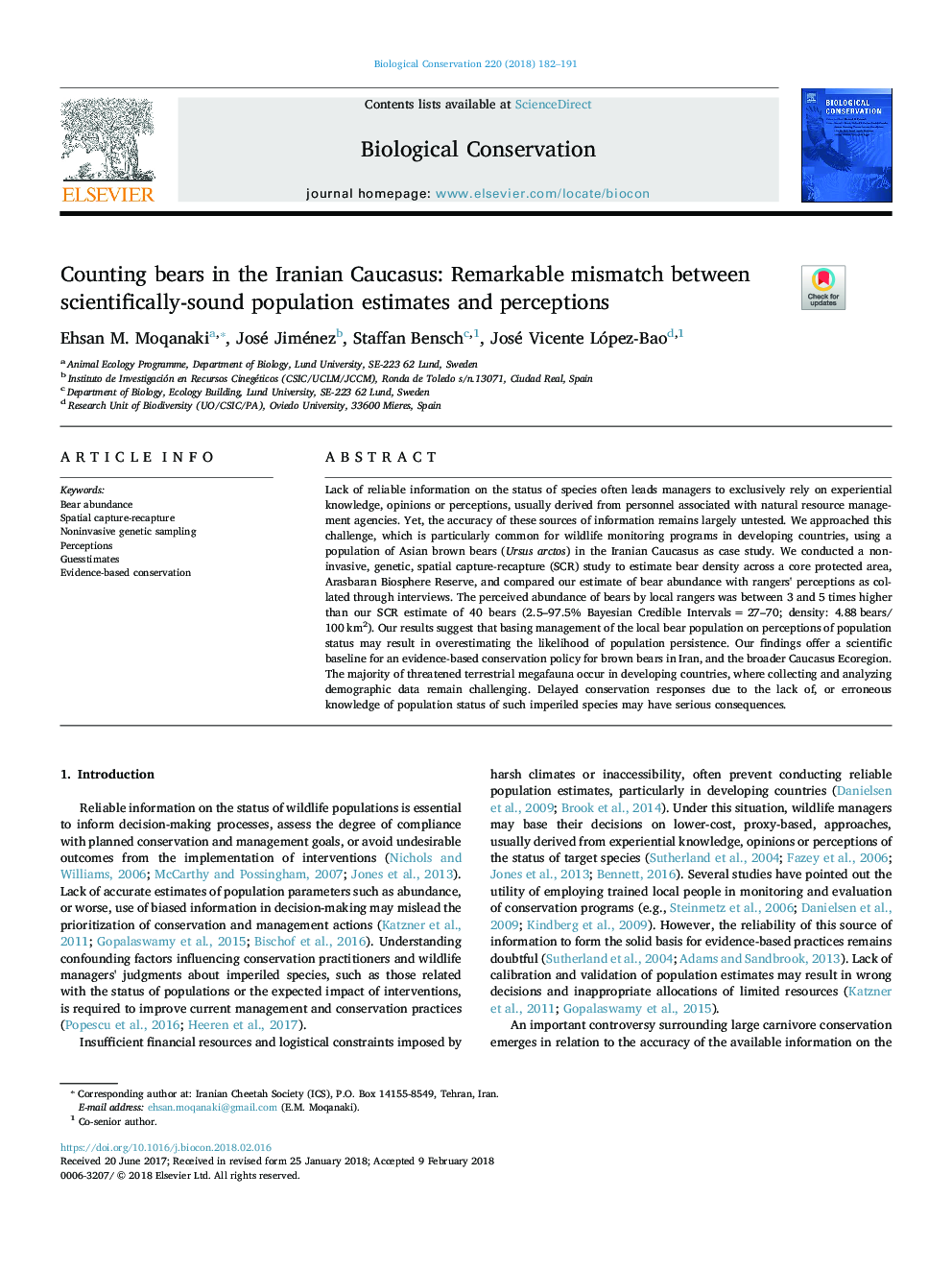| کد مقاله | کد نشریه | سال انتشار | مقاله انگلیسی | نسخه تمام متن |
|---|---|---|---|---|
| 8847387 | 1617885 | 2018 | 10 صفحه PDF | دانلود رایگان |
عنوان انگلیسی مقاله ISI
Counting bears in the Iranian Caucasus: Remarkable mismatch between scientifically-sound population estimates and perceptions
ترجمه فارسی عنوان
شمارش خرس ها در قفقاز ایران: ناسازگاری قابل توجه بین تخمین ها و ادراکات جمعیت شناختی صحیح
دانلود مقاله + سفارش ترجمه
دانلود مقاله ISI انگلیسی
رایگان برای ایرانیان
کلمات کلیدی
موضوعات مرتبط
علوم زیستی و بیوفناوری
علوم کشاورزی و بیولوژیک
بوم شناسی، تکامل، رفتار و سامانه شناسی
چکیده انگلیسی
Lack of reliable information on the status of species often leads managers to exclusively rely on experiential knowledge, opinions or perceptions, usually derived from personnel associated with natural resource management agencies. Yet, the accuracy of these sources of information remains largely untested. We approached this challenge, which is particularly common for wildlife monitoring programs in developing countries, using a population of Asian brown bears (Ursus arctos) in the Iranian Caucasus as case study. We conducted a noninvasive, genetic, spatial capture-recapture (SCR) study to estimate bear density across a core protected area, Arasbaran Biosphere Reserve, and compared our estimate of bear abundance with rangers' perceptions as collated through interviews. The perceived abundance of bears by local rangers was between 3 and 5 times higher than our SCR estimate of 40 bears (2.5-97.5% Bayesian Credible Intervalsâ¯=â¯27-70; density: 4.88â¯bears/100â¯km2). Our results suggest that basing management of the local bear population on perceptions of population status may result in overestimating the likelihood of population persistence. Our findings offer a scientific baseline for an evidence-based conservation policy for brown bears in Iran, and the broader Caucasus Ecoregion. The majority of threatened terrestrial megafauna occur in developing countries, where collecting and analyzing demographic data remain challenging. Delayed conservation responses due to the lack of, or erroneous knowledge of population status of such imperiled species may have serious consequences.
ناشر
Database: Elsevier - ScienceDirect (ساینس دایرکت)
Journal: Biological Conservation - Volume 220, April 2018, Pages 182-191
Journal: Biological Conservation - Volume 220, April 2018, Pages 182-191
نویسندگان
Ehsan M. Moqanaki, José Jiménez, Staffan Bensch, José Vicente López-Bao,
